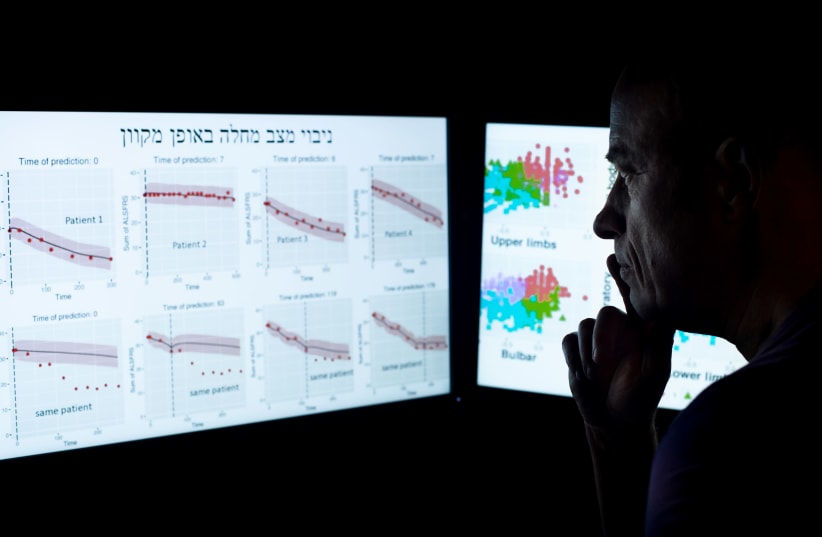Breakthrough research on fruit flies may pave way for ALS cure
The work on fruit flies in the lab shows how protein interactions can preserve or prevent the nerve cell death that is a hallmark of ALS.
“As a doctor, it’s been so important for me to be able to sit down with a patient or their family and say to them, ‘we’re trying to stop this disease,’” said Strong, a clinician-scientist who has devoted his career to finding a cure for ALS. He and his colleagues have just published their findings in the journal Brain under the title “Mitigation of TDP-43 toxic phenotype by an RGNEF fragment in amyotrophic lateral sclerosis models.”
“It’s been 30 years of work to get here; three decades of looking after families and patients and their loved ones when all we had was hope. This gives us reason to believe we’ve discovered a path to treatment,” Strong said with enthusiasm.
DNA 370 (credit: Thinkstock/Imagebank)Halting or reversing the progression of the disease
ALS is a debilitating neurodegenerative condition that progressively impairs nerve cells responsible for muscle control, leading to muscle wastage, paralysis, and ultimately, death. The average life expectancy of an ALS patient post-diagnosis is a mere two to five years (although, unusually, Hawking – diagnosed at 21 – managed to survive with severe disability until the age of 76).
Strong and colleagues found that targeting an interaction between two proteins present in ALS-impacted nerve cells can halt or reverse the disease’s progression. The team also identified a mechanism to make this possible.
“Importantly, this interaction could be key to unlocking a treatment not just for ALS but also for other related neurological conditions, like frontotemporal dementia,” said Strong, who holds the Arthur J. Hudson Chair in ALS Research at Western’s Schulich School of Medicine & Dentistry. “It is a game changer.”
In virtually all ALS patients, a protein called TDP-43 is responsible for forming abnormal clumps within cells, which causes cell death. In recent years, Strong’s team discovered a second protein, called RGNEF, with functions that are opposite to TDP-43.
The team’s latest breakthrough identifies a specific fragment of that RGNEF protein, named NF242, that can mitigate the toxic effects of the ALS-causing protein. The researchers discovered that when the two proteins interact with each other, the toxicity of the ALS-causing protein is removed, significantly reducing damage to the nerve cell and preventing its death.
In fruit flies, the approach notably extended lifespan, improved motor functions, and protected nerve cells from degeneration. Similarly, in mouse models, the approach led to enhanced lifespan and mobility, along with a reduction in neuroinflammation markers.
The team’s path to discovery was paved by the Temerty family’s long-standing investment in ALS research at Western – support that Strong calls “truly transformational.” The foundation, established by James Temerty, founder of Northland Power Inc., and Louise Arcand Temerty, is investing $10 million over five years to power the next steps to bring this treatment to ALS patients.
“Finding an effective treatment for ALS would mean so much to people living with this terrible disease and to their loved ones,” said James Temerty and his wife Louise, who are devoted to to advancing human health and healthcare in Canada. Their total investment in it brings the neurodegenerative disease research at Western to $18 million.
THIS PAGE WAS POSTED BY SPUTNIK ONE OF THE SPUTNIKS ORBIT BLOG HTTPS://DISQUS.COM/HOME/FORUM/THESPUTNIKSORBIT-BLOGSPOT-COM/




No comments:
Post a Comment